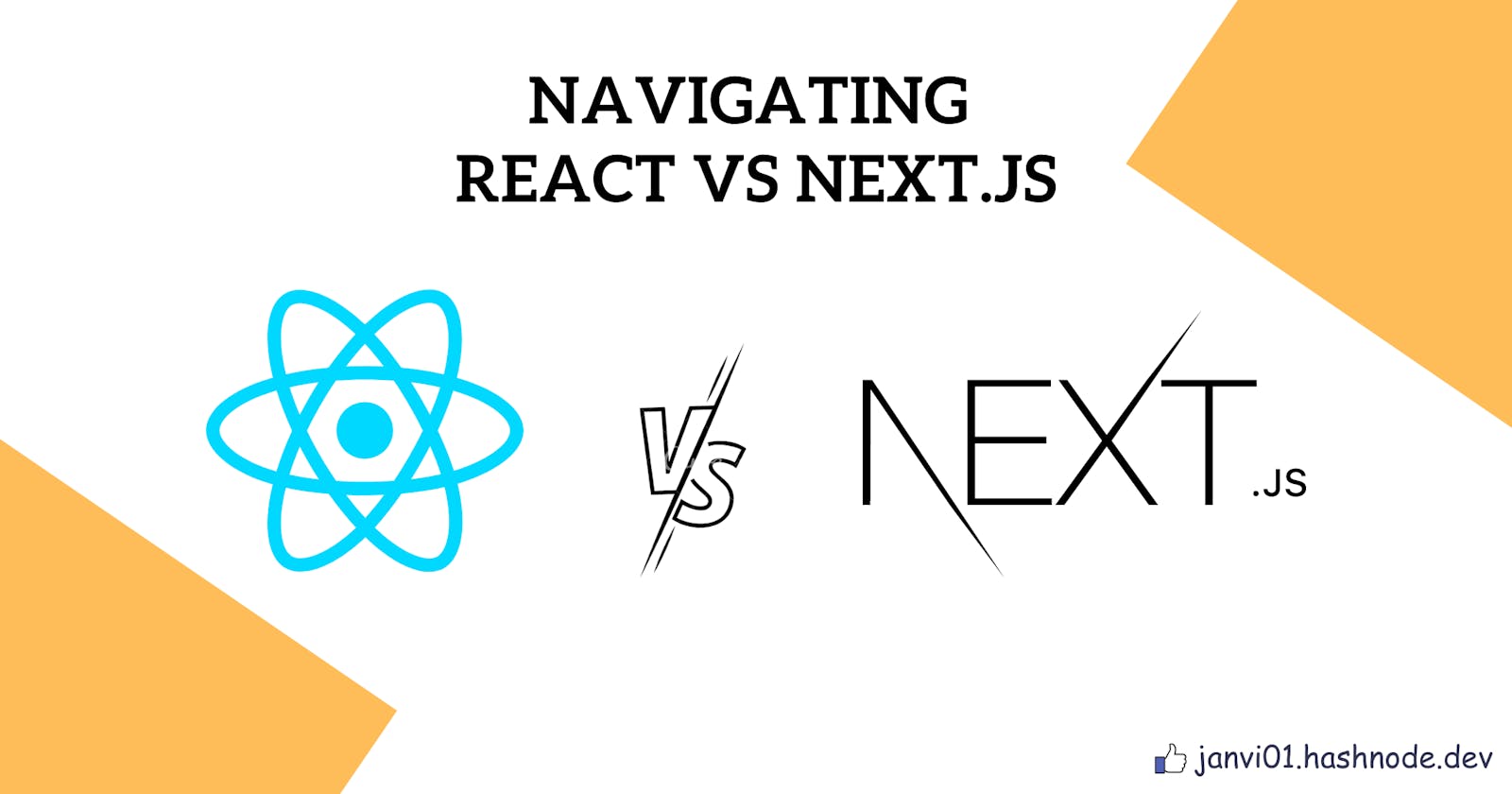Hello everyone, as we know In today's ever-evolving landscape of web development, two technologies that have consistently held the spotlight are React and Next.js. As developers, designers, and decision-makers, it's imperative to comprehend the strengths, nuances, and real-world implications of these tech stacks.
Let's unravel the compelling saga of major differences between React and Next.js, comparing their features, and the scenarios where one might shine brighter than the other. Whether you're embarking on a new web venture or experience already, this blog serves as your compass, guiding you through the exhilarating journey of React versus Next.js.
What is React?

React is an open-source JavaScript library developed and maintained by Facebook for building user interfaces (UIs). It's primarily used for creating interactive and dynamic web applications. React was first introduced in 2013 and has since gained widespread adoption in the web development community due to its efficiency and flexibility.
What is Next.js?

Next.js is an open-source React framework for building server-side rendered (SSR) and statically generated (SSG) React applications. It is built on top of React and provides a set of tools and conventions to streamline the development of modern web applications. Next.js was created by Vercel and has gained significant popularity in the web development community.
The major difference between React and Next.js
React is a JavaScript library whereas Next.js is a React framework.
React is a JavaScript library developed by Facebook for building user interfaces. It provides a way to create reusable UI components and manage the dynamic updating of those components as the data changes.
Next.js, on the other hand, is a framework for building React applications. It's not a separate entity from React rather it's built on top of React. Next.js adds a layer of functionality on top of React to help with server-side rendering (SSR), static site generation (SSG), routing, and more. It provides a structured approach to building web applications that may have features like pre-rendering pages on the server, optimizing performance, handling routing, and working with APIs.
Hence, React is the foundation, and Next.js builds upon React to provide additional capabilities for building web applications.
Performance - Client Side Rendering in React whereas Server Side Rendering in Next.js
.png)
image ref: velog.io/@bbirds94/SSR-CSR
By default, React applications are typically rendered on the client side. This means that the initial HTML content is sent to the browser without JS and CSS as an empty shell/page, and then JavaScript takes over and renders the components on the client side. This approach is called Client Side Rendering(CSR).
Next.js supports Server side rendering where the server generates the initial HTML content including JS and CSS for each request and sends it to the client. This can improve the initial loading performance and is beneficial for SEO since search engines can index the fully rendered page. Next.js simplifies the process of setting up SSR, allowing you to fetch data and render components on the server before sending the page to the client.
To know the in-depth difference between client-side rendering and server-side rendering, check out this amazing article by Yudhajit Adhikary.
Routing - React doesn't support built-in routing whereas Next.js support built-in routing
React itself doesn't provide built-in routing capabilities. The user has to typically use third-party libraries like react-router to handle routing in React applications.
Next.js includes built-in routing capabilities, making it easier to create multi-page applications. It uses a file-based routing system where each file in the "pages" directory corresponds to a route in the application.
As we conclude our exploration of React vs. Next.js, remember that each technology has its unique strengths and ideal use cases. React remains the go-to solution for crafting intricate, interactive user interfaces with utmost flexibility, while Next.js excels in delivering blazing-fast user experiences through server-side rendering and performance enhancements.

